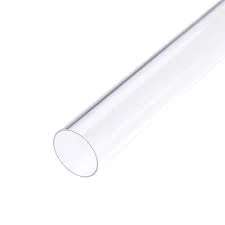joulu . 03, 2024 18:13 Back to list
sprinkler hdpe pipe
The Importance of HDPE Pipe in Sprinkler Systems
In recent years, the need for efficient irrigation systems has grown exponentially, driven by the increasing demand for agricultural productivity and the sustainable management of water resources. Among the various components of an irrigation system, the choice of piping material plays a crucial role in determining the system's overall effectiveness and longevity. High-density polyethylene (HDPE) pipes have emerged as a popular choice for sprinkler systems due to their numerous advantages.
What is HDPE?
High-density polyethylene (HDPE) is a robust plastic material known for its durability and resistance to various environmental factors. It is created through the polymerization of ethylene, resulting in a material that boasts high tensile strength and flexibility. These characteristics make HDPE an ideal option for multiple applications, including construction, packaging, and notably, irrigation systems.
Advantages of HDPE Pipes in Sprinkler Systems
1. Durability and Longevity One of the primary benefits of HDPE pipes is their exceptional durability. Resistant to corrosion, abrasion, and impact, HDPE pipes can withstand harsh environmental conditions, making them suitable for long-term use. Unlike traditional metal pipes, which may rust or corrode over time, HDPE pipes maintain their structural integrity, resulting in lower maintenance costs and a longer lifespan.
2. Lightweight and Easy to Install HDPE pipes are significantly lighter than conventional piping materials, such as cast iron or PVC. This characteristic simplifies transportation and installation, reducing labor costs and time. Their flexibility allows for easy bending to fit different landscape designs, making them versatile for various applications.
3. Chemical Resistance Agriculture often involves the use of fertilizers and pesticides, which can be corrosive to certain materials. HDPE pipes exhibit excellent chemical resistance, ensuring that they will not degrade when exposed to these substances. This capability extends the life of the irrigation system and ensures consistent water quality.
sprinkler hdpe pipe

4. Low Friction Loss The interior surface of HDPE pipes is smooth, which minimizes friction loss during water flow. This feature enhances the efficiency of the sprinkler system, allowing for a more uniform distribution of water. Farmers and landscapers benefit from improved water pressure and reduced energy consumption in pumping systems.
5. Environmentally Friendly HDPE is a recyclable material, which aligns with the sustainable practices gaining traction in modern agriculture. By choosing HDPE pipes, growers can contribute to environmental protection efforts while also reducing waste.
Applications in Modern Irrigation
HDPE pipes are particularly well-suited for various irrigation applications. For instance, in agricultural settings, they can be used in both surface and subsurface irrigation systems. The ability to deliver water directly to the root zone of plants optimizes water usage and enhances crop yield. Additionally, in landscaping and municipal applications, HDPE pipes can efficiently manage water distribution in parks, golf courses, and residential gardens.
Conclusion
As the demand for effective and sustainable irrigation solutions continues to rise, the role of HDPE pipes in sprinkler systems is becoming increasingly significant. Their durability, lightweight nature, chemical resistance, and low friction loss make them an ideal choice for both agricultural and landscaping applications. By investing in HDPE piping, growers and landscapers not only enhance the efficiency of their irrigation systems but also contribute to sustainable water management practices. As technology advances and the need for efficient water usage becomes more critical, HDPE pipes will undoubtedly remain at the forefront of irrigation solutions, helping to ensure a sustainable future for agriculture and the environment.
Ultimately, the integration of HDPE pipes into sprinkler systems represents a progressive step towards enhancing water efficiency, boosting agricultural productivity, and implementing eco-friendly practices in irrigation.
-
PVC Transparent Sheet Roll - Durable & Flexible PVC Plastic Sheet Roll for Industrial & Home Use
NewsJun.24,2025
-
High-Quality PVC PPR Pipes and Fittings Durable ERA PPR Solutions
NewsJun.10,2025
-
High-Quality Large HDPE Sheets & Large Diameter PVC Pipe Durable Large PVC Pipe Supplier
NewsJun.10,2025
-
High Density Polyethylene Cutting Board - Durable & Food Safe
NewsJun.09,2025
-
3 Inch PVC Pipe for Durable Irrigation Affordable & Reliable
NewsJun.09,2025
-
Premium PPR Plastic Water Pipe Fittings - Durable & Leak-Free
NewsJun.09,2025

